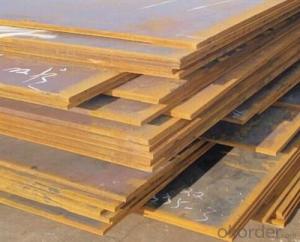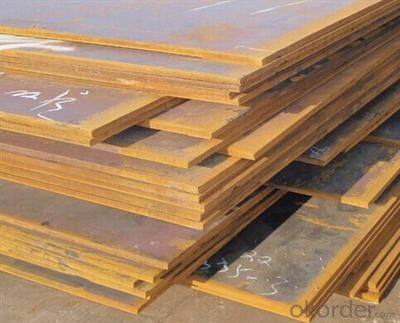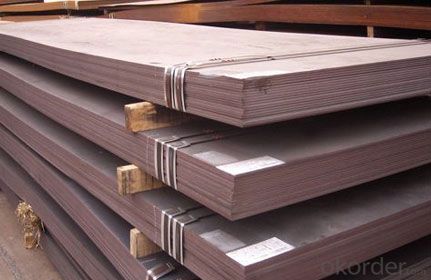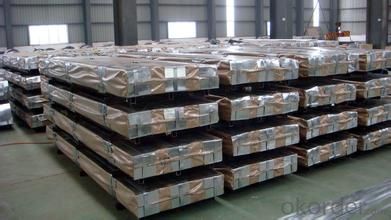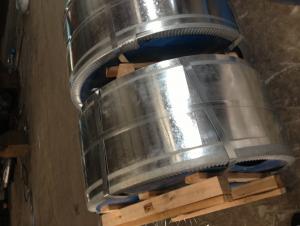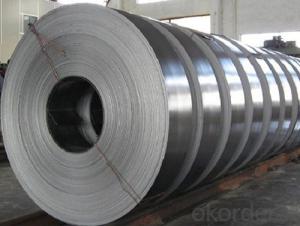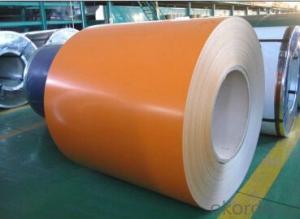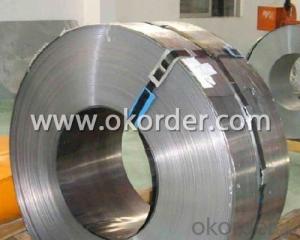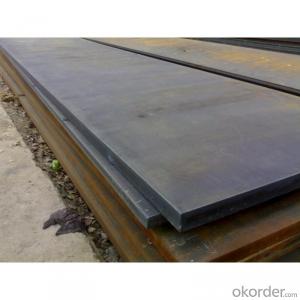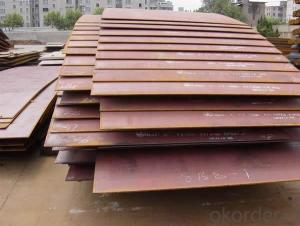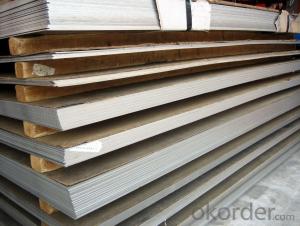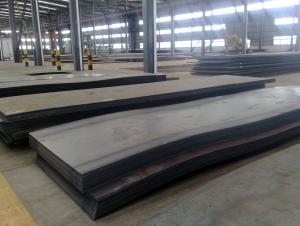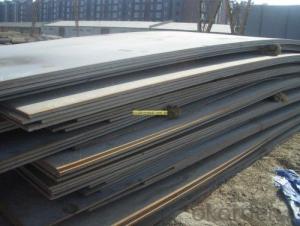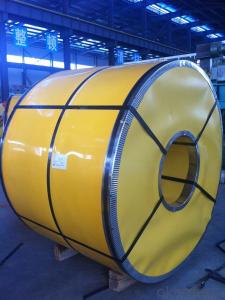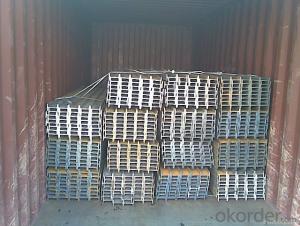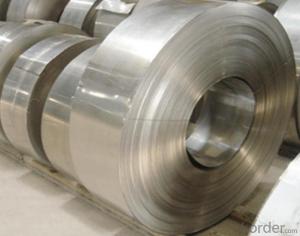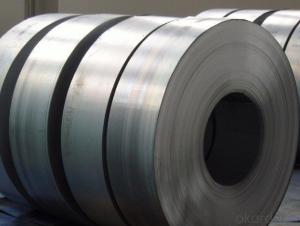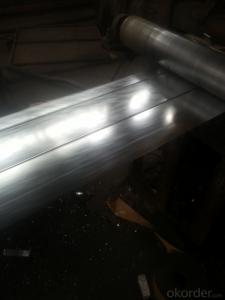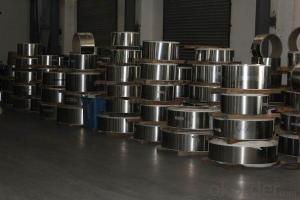Hot Rolled Steel Sheet for Shipbuilding and pipe
- Loading Port:
- Tianjin
- Payment Terms:
- TT OR LC
- Min Order Qty:
- 500 m.t.
- Supply Capability:
- 5000 m.t./month
OKorder Service Pledge
OKorder Financial Service
You Might Also Like
Specification
1. Product Description
The Billets as raw materials, through furnace heating, high-pressure water to reduce the phosphorus, then entering the roughing mill, cutting head, end, and then put into the finishing mill, cutting the edge, after the times of straightening, leveling and other finishing line treatment, and then cutting board or coil becomes the hot rolled steel sheet and hot rolled steel coil.
2. Main Features
Characteristics of hot rolled steel hot-rolled steel is a high temperature heating and rolled steel, hot rolled product has high strength, good toughness, easy to processing molding and good weldability and other excellent properties, which are widely used in ship, automobile, Bridges, buildings, machinery, pressure vessels and other manufacturing industries.
3. Excellent Product Image
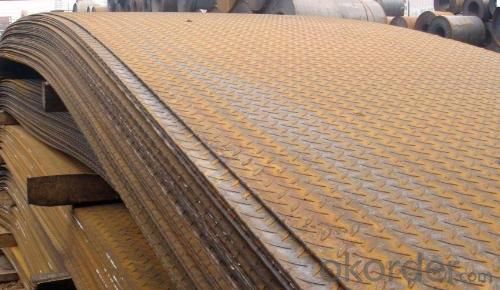
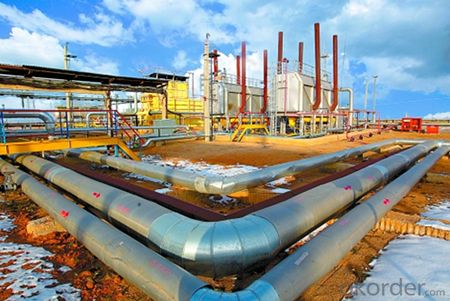
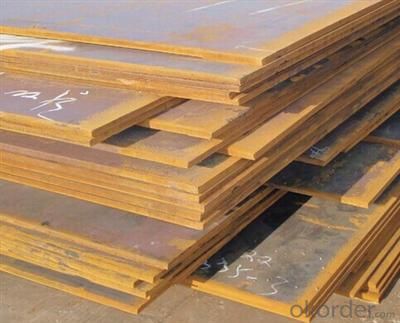
4. Application
Refers to the production according to the requirements of classification society rules for the construction of hot rolled steel plate used in the manufacture of hull structure.
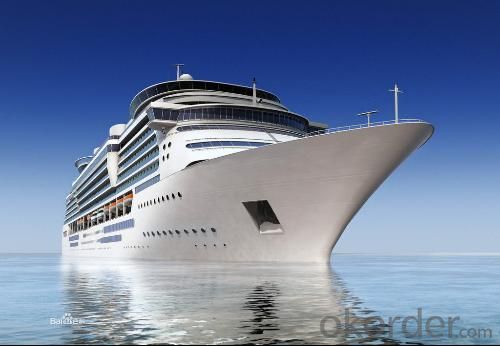
Because of poor working conditions, hull shell to chemical corrosion and electrochemical corrosion of sea water and sea creatures, microbial corrosion; Hull bear larger impact waves and alternating load; Ship shape the processing method of complex factors, so strict in hull structure steel. First good toughness is one of the most critical requirements, in addition, require high strength, good corrosion resistance, weldability, processing forming performance and surface quality. For assuring quality and ensure there is enough toughness and requirements of the chemical composition of the Mn/C above 2.5, also has strict requirements for carbon equivalent, and recognized by the survey department of steel production. Hull with structural steel in accordance with the minimum yield point strength level is divided into: general strength structural steel and high strength structural steel. General strength and high strength steel with hull structural steel points two kinds, general strength steel according to quality points A, B, D and E four grades; Strength of high strength steel and two levels and three quality grades; AH32, DH32, EH32, AH36, DH36, EH36.
China classification society standard the general strength of structural steel is divided into: A, B, D, E four quality levels (i.e., CCSA CCSB, CCSC, continental scientific drilling (CCSD); China classification society standard level of strength of high strength structural steel for three, four quality grade.
5. FAQ
1.Q: Do you have attended any exhibition?
A: We almost go to Canton Fair and Overseas Exhibitions every year.
2. Q: How to guarantee the quality of the products?
A: We have established the international advanced quality management system,every link from raw material to final product we have strict quality test;We resolutely put an end to unqualified products flowing into the market. At the same time, we will provide necessary follow-up service assurance.
3. Q: How long can we receive the product after purchase?
A: Usually within thirty working days after receiving buyer’s advance payment or LC. We will arrange the factory manufacturing as soon as possible. The cargo readiness usually takes 15-25 days, but the shipment will depend on the vessel situation.
Why choose us?
Pre-sale Service
1. Sample can be offered with sample charge and courier fee by buyer's side.
2. We have full stock,and can deliver within short time.Many styles for your choices.
3. OEM and ODM order are accepted, Any kind of logo printing or design are available.
4. Good Quality + Factory Price + Quick Response + Reliable Service, is what we are trying best to offer you
5. All of our products are produce by our professional workman and we have our high-work-effect foreign trust-worthy sales team.
6. We have 18 years' experience of design, manufacture and sell lingerie, we cherish every order from our honor.
After you choose
1. Count the most efficient shipping cost and make invoice to you at once.
2. Check quality again, then send out to you at 1-2 working day after your payment.
3. Email you the tracking no, and help to chase the parcels until it arrive you.
- Q: How do steel strips contribute to dimensional stability in various applications?
- The inherent properties and characteristics of steel strips play a crucial role in maintaining dimensional stability in various applications. To begin with, steel strips are renowned for their exceptional strength and rigidity. This unique quality enables them to withstand external forces and resist deformation, ensuring that the dimensions of the application remain stable. Whether it be in construction, automotive, or manufacturing industries, steel strips provide the necessary structural integrity to prevent any significant changes in shape or size. Furthermore, steel strips exhibit excellent thermal stability. They possess the ability to withstand extreme temperature variations without experiencing significant expansion or contraction. This characteristic proves particularly vital in applications where dimensional stability is of utmost importance, such as in the aerospace industry or precision engineering. Steel strips can retain their shape and size even under extreme temperature conditions, thus guaranteeing the accuracy and reliability of the final product. In addition, steel strips demonstrate minimal creep, which refers to the gradual deformation under a constant load over time. This property is particularly valuable in applications that demand long-term dimensional stability, such as bridges or infrastructure projects. Steel strips can endure prolonged stress without experiencing significant deformation, thereby ensuring that the dimensions of the structure remain stable over time. Moreover, steel strips possess exceptional corrosion resistance, which is essential for applications exposed to harsh environments or corrosive substances. By preventing corrosion, steel strips retain their original dimensions and structural integrity, thus contributing to dimensional stability. Finally, steel strips can be precisely manufactured to meet specific dimensional requirements. They can be produced with tight tolerances and accurate dimensions, guaranteeing consistency and stability across various applications. This precision in manufacturing allows for seamless integration and assembly, minimizing any potential dimensional variations. In conclusion, steel strips play a vital role in achieving and maintaining dimensional stability in various applications due to their high strength, thermal stability, resistance to creep and corrosion, and precise manufacturing capabilities. These properties ensure that the dimensions of the application remain stable, reliable, and consistent over time, providing durability and functionality to the end product.
- Q: How are steel strips sawed or cut with a bandsaw?
- Steel strips can be sawed or cut with a bandsaw by securing the strip on a stable surface and feeding it through the bandsaw blade, which moves in a continuous loop. The bandsaw blade features sharp teeth that cut through the steel strip as it is guided by the operator. This method allows for precise and efficient cutting of steel strips to desired lengths or shapes.
- Q: How are steel strips packaged and shipped?
- Typically, steel strips are packaged and shipped in a manner that guarantees their safety and protection while in transit. To achieve this, a series of steps are undertaken during the packaging process. Initially, the steel strips are carefully rolled and tightly coiled, which effectively reduces the likelihood of bending or warping during transportation. Subsequently, the coiled steel strips are typically enveloped with a protective layer, such as plastic or paper, to provide an additional shield against moisture and external factors. Following the wrapping stage, the coiled steel strips are commonly placed on either wooden or steel pallets, facilitating easy handling and transportation. By utilizing pallets, the weight is evenly distributed, preventing excessive pressure on the steel strips and thus decreasing the chances of damage. Furthermore, to further reinforce the security of the steel strips, metal or plastic straps are often employed. These straps are firmly fastened around the coiled strips, effectively holding them in place and preventing any movement or shifting during transit. Once the steel strips are adequately packaged, they are loaded onto trucks, ships, or other transportation vehicles for shipment to their intended destination. It is of utmost importance to handle the packages with caution and ensure their proper securing to avoid any accidents or damage during transportation. In summary, the packaging and shipping of steel strips prioritize their safety and protection. The process involves rolling, wrapping, palletizing, and strapping to secure the steel strips and minimize the risk of damage during transportation.
- Q: Are steel strips cost-effective compared to other materials?
- Yes, steel strips can be considered cost-effective compared to other materials for various applications. Steel is a versatile material that offers several advantages such as high strength, durability, and resistance to corrosion. These qualities make steel strips suitable for a wide range of industries, including construction, automotive, manufacturing, and infrastructure. In terms of cost, steel strips can be a cost-effective choice due to their long lifespan and low maintenance requirements. Steel is highly durable and can withstand harsh environments, reducing the need for frequent repairs or replacement. This longevity can result in significant cost savings over time. Additionally, steel is readily available and has a consistent supply, which helps maintain its affordability. The production processes for steel have become more efficient over the years, further contributing to its cost-effectiveness. Furthermore, steel strips can be easily fabricated and customized to meet specific project requirements, reducing wastage and optimizing resource allocation. This flexibility adds to the overall cost-effectiveness of using steel strips. However, it is essential to consider specific project requirements, such as the desired application, budget, and environmental factors, before determining the cost-effectiveness of steel strips compared to other materials. Each material has its own unique characteristics and associated costs, so a thorough analysis should be conducted to ensure the most suitable and cost-effective choice is made.
- Q: What is the difference between strip steel and silicon steel?
- Silicon steel is a silicon iron alloy with silicon content of about 3%~5% and other major iron. Divided into oriented silicon steel and non oriented silicon steel, it is an important soft magnetic alloy in electric power, electronics and military industry. Silicon steel refers to a low carbon silicon iron alloy with silicon content ranging from 0.5% to 4.5%. It is divided into non oriented silicon steel and oriented silicon steel because of its different structures and uses. Silicon steel is mainly used as the core of various motors, generators, compressors, motors and transformers. It is an indispensable raw material for electric power, household appliances and other industries.
- Q: How are steel strips processed for insulation?
- Steel strips are processed for insulation through a series of steps to ensure maximum effectiveness and durability. Firstly, the steel strips are cleaned and degreased to remove any impurities or contaminants that may hinder the insulation process. This is usually done through a combination of chemical baths and mechanical cleaning methods. Once the steel strips are clean, they are then coated with a layer of insulation material. This can be done using various methods such as hot-dip galvanizing, where the steel strips are immersed in a bath of molten zinc, or by applying a layer of epoxy or polyurethane coating. These insulation materials provide a protective barrier against heat, moisture, and external elements, preventing corrosion and enhancing the thermal efficiency of the steel strips. After the initial insulation coating, the steel strips may undergo further processing depending on the specific requirements. This can include additional layers of insulation material, such as polyethylene or PVC, which provide added protection and insulation properties. The steel strips may also be subjected to heat treatment processes to enhance their mechanical properties and improve their resistance to wear and tear. Finally, the insulated steel strips are typically inspected for quality assurance before being packaged and shipped to their intended destination. This involves checking for proper insulation coverage, thickness, adhesion, and overall coating integrity. Various testing methods such as visual inspection, adhesion tests, and thickness measurements are employed to ensure that the insulation meets the required standards and specifications. In summary, the processing of steel strips for insulation involves cleaning, coating with insulation materials, additional layers if necessary, heat treatment, and quality inspection. These processes are crucial in ensuring that the steel strips are effectively insulated and protected, making them suitable for various applications in industries such as construction, automotive, and electrical.
- Q: How are steel strips made?
- Steel strips are made through a process called hot rolling, where a large steel slab is heated and passed through a series of rolling mills to reduce its thickness and shape it into a long strip.
- Q: Can steel strips be used for making watch straps?
- Yes, steel strips can be used for making watch straps. Steel is a durable and versatile material that is commonly used in the manufacturing of watch straps due to its strength, resistance to corrosion, and sleek appearance.
- Q: How do steel strips contribute to weight reduction in various applications?
- Steel strips contribute to weight reduction in various applications through their unique properties and manufacturing processes. Firstly, steel strips are known for their high strength-to-weight ratio, which means they provide excellent strength and durability while being relatively lightweight. This makes them ideal for applications where weight reduction is crucial, such as in automotive, aerospace, and construction industries. By using steel strips instead of heavier materials, manufacturers can achieve significant weight savings without compromising the structural integrity of their products. Furthermore, steel strips can be produced in thin gauges, allowing for the creation of lighter and more flexible components. These thin strips can be easily formed, bent, or shaped into complex designs, providing enhanced design flexibility to engineers. This versatility in design enables the optimization of weight and performance, leading to more efficient and lightweight structures. In addition to their inherent properties, steel strips can also undergo various advanced manufacturing techniques to further reduce weight. For example, steel strips can be cold-rolled or hot-rolled to achieve different levels of thickness and strength. Cold-rolling, in particular, can significantly decrease the thickness of the strips while maintaining their mechanical strength. This reduction in thickness translates into weight reduction without sacrificing the desired strength properties. Moreover, steel strips can be coated or treated with advanced surface technologies to improve their corrosion resistance, which can lead to weight reduction in certain applications. By using corrosion-resistant steel strips, manufacturers can eliminate the need for additional protective coatings or treatments, thereby reducing the overall weight of the final product. Overall, steel strips contribute to weight reduction in various applications by offering a high strength-to-weight ratio, flexibility in design, and the ability to undergo advanced manufacturing techniques. These properties, combined with their corrosion resistance, make steel strips an attractive choice for industries seeking to reduce weight while maintaining structural integrity and performance.
- Q: What are the specifications for steel strips used in the production of door hinges?
- Depending on the manufacturer's specific requirements and the type of door hinge being produced, the specifications for steel strips used in door hinge production can vary. However, there are commonly followed general specifications in the industry. Typically, high-quality carbon or stainless steel is used to make the steel strips for door hinges. Carbon steel is commonly used for standard door hinges, while stainless steel is preferred for hinges that require higher corrosion resistance or aesthetic appeal. When it comes to dimensions, the steel strips for door hinges come in various thicknesses, ranging from 0.5mm to 3mm. The width of the strips can vary depending on the hinge design and application, but it usually falls between 10mm and 50mm. The tensile strength and yield strength of the steel strips are crucial specifications to consider. Tensile strength refers to the maximum stress the strip can withstand before breaking, while yield strength is the stress at which the strip permanently deforms. These values can range from 300 MPa to 700 MPa or more, depending on the specific needs of the door hinge. Moreover, the steel strips used in door hinge production may undergo specific treatments or coatings to enhance their properties. For instance, heat treatment can be applied to improve strength and hardness. Galvanization or coating with other corrosion-resistant materials can also be done to prevent rusting or enhance overall hinge durability. In conclusion, the specifications for steel strips used in door hinge production can vary, but they typically include considerations for the type of steel, dimensions, tensile strength, yield strength, and any additional treatments or coatings required to meet the specific needs of the door hinge.
Send your message to us
Hot Rolled Steel Sheet for Shipbuilding and pipe
- Loading Port:
- Tianjin
- Payment Terms:
- TT OR LC
- Min Order Qty:
- 500 m.t.
- Supply Capability:
- 5000 m.t./month
OKorder Service Pledge
OKorder Financial Service
Similar products
Hot products
Hot Searches
Related keywords
